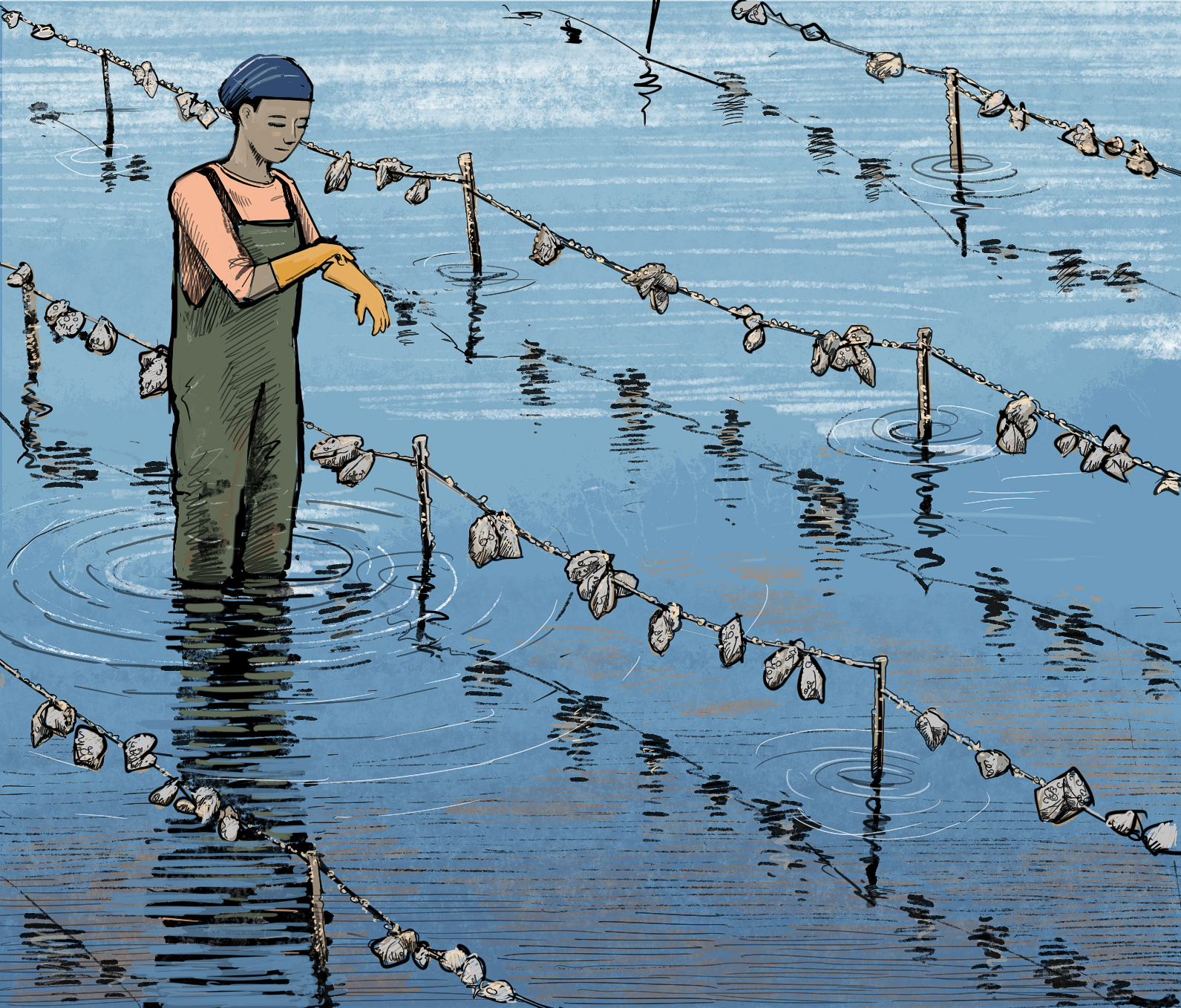Olympia Oysters

The Olympia oyster (Ostrea lurida) is the only oyster native to the West Coast, found from Southern California to British Columbia, Canada. It has a small, round shell ranging in color from white to dark purple, often with yellow or brown stripes. The Olympia oyster prefers a mix of substrates, including sand, gravel, and silt, and can be found in estuaries, tidal channels, sounds and bays. It is a filter feeder, consuming microscopic plankton and detritus in the water column. A single oyster is capable of filtering several quarts of water per day. The Olympia oyster is a hermaphrodite. It first reproduces as a male and then can alternate between sexes during subsequent reproductive cycles. The oysters aggregate into masses known as oyster beds, which provide habitat for other marine organisms such as anemones and crabs. Olympia oysters have been an important food source for Indigenous peoples along the West Coast for millennia.
Overall availability
Olympia oysters are farmed in Washington and available year-round with peak availability in fall. They can be bought directly from shellfish farms and stores as live, fresh product. As Olympia oysters have a slower growth rate than other farmed oysters, they are not a commonly grown species. However, despite their smaller size, their flavor and round shape make them an appealing product. While they are grown in California, most are produced to restore natural oyster reefs and not for food markets.

Management
Olympia oysters are farmed similarly to other oyster species (Pacific, Kumamoto, etc.), using methods including bag (basket) culture/flip bags and/or racks for early, small stages and broadcast bottom culture methods for later, larger stages.
Commercial shellfish aquaculture is managed by a variety of agencies such as the state Departments of Fish and Wildlife or Natural Resources (CA, OR, WA), the Army Corp of Engineers, the Food and Drug Administration, and local and state Departments of Public Health. In Washington, shellfish aquaculture is also co-managed with Treaty Tribes. Learn more about commercial shellfish aquaculture.




